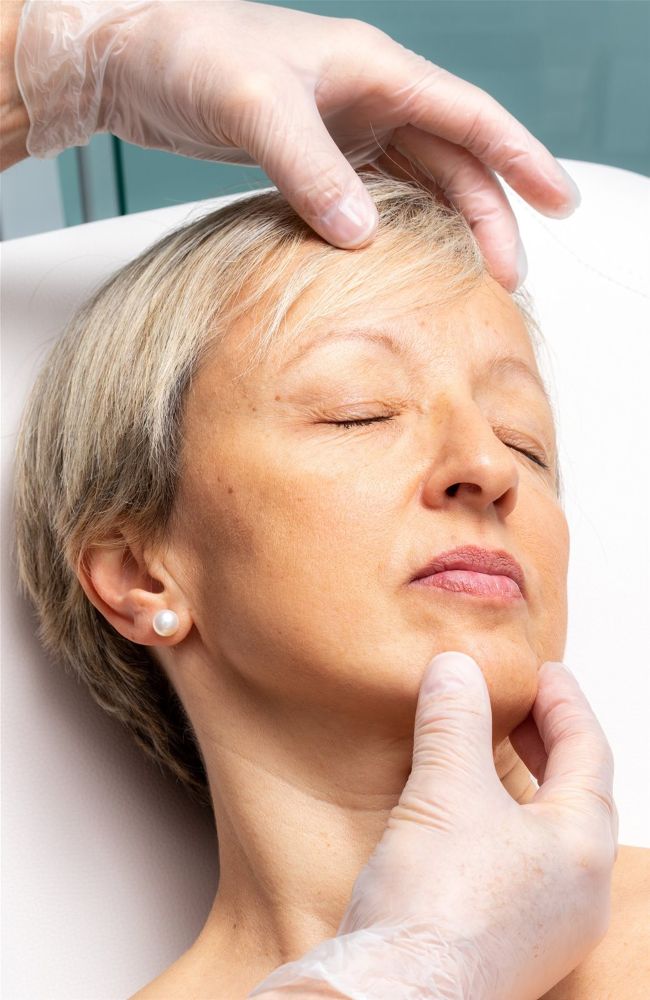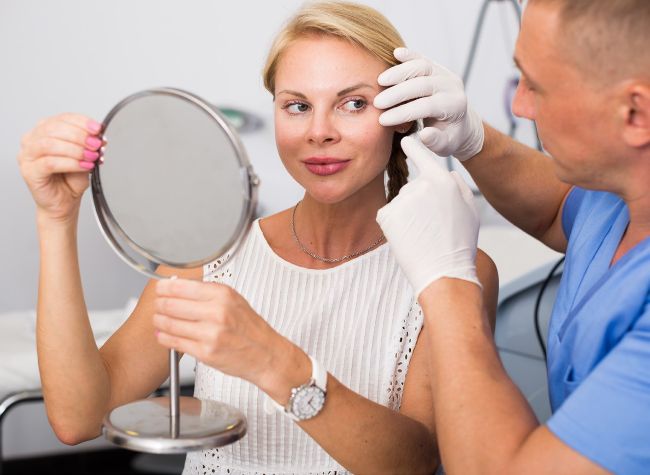AESTHETIC MEDICINE
The ageing morphot ypes
Dr Bianca Busch expounds on a classification system that analyses how the skin will age and whether it can inform what aesthetic treatments may or may not be suited to the patient

Image from Shutterstock
In terms of defining the ageing morphotypes, one can say that while morphology is the study of the shape and form of things, a morphotype refers to varying individuals within the same species and what differentiates them. When it comes to us humans, as it relates to facial ageing, different facial morphotypes and how these age have been described. Understanding the differences between these morphotypes may help us guide and tailor our treatment strategies to address ageing.
There have been 4 different morphotypes described: Worn (sometimes referred to as ‘tired’); Wrinkled; Deformed; and Muscular. Some researchers also refer to a 5th type: Mixed. In my practice, many of the patients actually fit into this 5th type. From my reading on the topic, the 4 morphotypes were based on studies of Caucasian females.
Different classification systems
There are plenty of skin and facial ageing classifications out there. In a systematic review by Gobos et al in 2015, they evaluated over 100 scales relating to skin ageing. They concluded that, in contrast to the large number of scales available, there was limited evidence to support their measurement properties and the recommendation of any scale must be made with caution due to the lack of good supporting methodology. I would agree with this.
While the principles discussed in the ageing morphotypes classification are well-known, I myself am yet to hear a speaker or presenter classify their patients into one of these classes. Every patient is unique and I think you can find a lot of overlap of the classifications in many of our patients that we examine.
From the reading that I have done, II. Kolgunenko has been credited with creating the ageing morphotype classification in a publication called, ‘Fundamentals of Gerontocosmetology’, Moscow, 1974.
"When you are
STARTING OUT
in
THE AESTHETIC FIELD,
skin classification scales like these help us to
RECOGNISE PATTERNS
and
ANALYSE FACES
but, only to an extent."

Image from Shutterstock
Evaluation tool
I would look at this classification system as another tool in the toolbox when it comes to evaluating the patient, which treatments they might benefit from the most and which treatments might not benefit them at all. For example, as we know the heavier face (so-called ‘deformed’ morphotype) is difficult to correct with threads and might benefit rather from surgical correction and referral to a plastic surgeon would be in their best interest.
One could use this classification from the age of the patient at their first consultation with you. For example, if a slim Caucasian female of Western-European descent, with very little subcutaneous facial fat and an oval face shape presents to you, you can already start promoting treatments that will limit photoageing and skin wrinkling. She would most likely benefit from starting from an early age with good photo-protection, adequate nutrition, appropriate skincare, chemical peels, mesotherapy, micro-needling. ‘skin-boosting’ etc.
Universal principles
When you are starting out in the aesthetic field, scales like these help us to recognise patterns and analyse faces but, only to an extent. While I don’t use this scale in particular when examining and treating patients, a lot of the principles of the scale are universal. For instance, photodamaged skin with elastosis, dyschromia and telangiectasia needs to be addressed in addition to any surgical and non-surgical treatments that the patient may be requesting. Without a good skin quality, these other treatments do not reach their full potential.
It is also a good reminder of when not to treat. We know that patients coming in with very heavy lower faces with thick skin and a lot of subcutaneous fat may not necessarily be good candidates for thread-lifting procedures and referral to a surgeon would be far more appropriate. Wrinkly patients may need to be advised to include areas like their neck and hands in their mesotherapy and skin revitalising procedures in order to achieve a more refreshed appearance. I also tend to refer these patients for laser and energy-based treatments like BBL® and Tixel®.
This classification scale could be useful when it comes to examining skin quality and the lower face in particular. Which of the aesthetician’s clients would benefit from good skincare, resurfacing procedures such as microneedling and chemical peels? The wrinkly morphotypes also need to focus on their necks from an earlier age.
For those clients complaining of looking ‘tired’ and they fit in more with the ‘worn’ morphotype, the addition of filler treatments by their aesthetic doctor may be appropriate. For those clients who appear more muscular, with less subcutaneous fat and a well-preserved jawline, the focus may be more on skin dyschromias, such as solar lentigines and melasma. Referral for upper and mid face fillers and botulinum toxin may also be indicated.
"EACH PATIENT
is
UNIQUE
in their
GENOTYPE
and
PHENOTYPE,
affected by
INTRINSIC
and
EXTRINSIC FACTORS
that have shaped
THEIR AGEING PATH."
Limitations
It is really important to understand the limitations of these types of skin classification scales. Each patient is unique in their genotype and phenotype, affected by intrinsic and extrinsic factors that have shaped their ageing path. What we might find ‘distracting’ on a face might not necessarily bother them. We can advise where necessary but, their subjective complaints come first.
The ageing morphotypes is a very old scale and there’s a beauty in diversity and in what makes us each unique. We live in a richly diverse community in South Africa and I don’t believe this scale is sufficient for all genders, cultures, races and faces.
Dr Bianca Busch is a General Practitioner in private practice with a special interest in aesthetic medicine.
References
1. Kolgunenko II. Fundamentals of Gerontocosmetology. Moscow:Medicine; 1974. 224 p
2. Yutskovskaya YA, Sergeeva AD, Kislitsyna AI, Landau M. Contouring of Lower Face and Chin in Consideration of Facial Morphotypes and Shapes-Is it a More Accurate Approach. Madridge J Dermatol Res. 2017; 2(1): 26-31.
3. Averina V, Aging Morphotypes classification and treatments, PRiME Journal. Nov 17 2015.
4. Dobos G, Lichterfeld A, Blume-Peytavi U, Kottner J. Evaluation of skin ageing: a systematic review of clinical scales, Br J Dermatol. 2015; 172 (5): 1249-61.